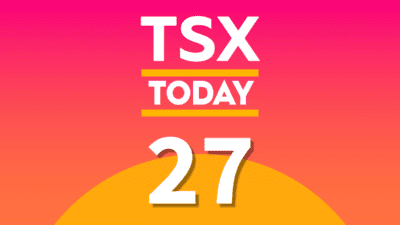The big deal is finally on the books: During the second quarter, Shoppers Drug Mart officially began operating under Loblaw (TSX: L). Now Loblaw’s parent company, George Weston Ltd (TSX: WN), has released its second-quarter financial results, revealing what the future of the company and its subsidiaries will be.
The hard numbers
Sales in the quarter rose significantly thanks to the inclusion of Shoppers Drug Mart, with total sales reaching $10.5 billion, up from $7.7 billion. This represents a 36% increase in year-over-year sales thanks to the inclusion of Shoppers Drug Mart. However, when Shoppers is removed from the equation, sales rose only to $7.9 billion from $7.7 billion, a modest gain in what was a difficult quarter for many retailers.
Adjusted EBITDA came in at $864 million with an 8.2% margin, up from $595 million with a margin of 7.6%. When adjusted without Shoppers, the numbers drop to $583 million from the $595 posted in Q2 2013.
Net income sacrificed for long-term growth
Net income is a less-than-rosy picture with a net loss of $208 million, or $1.71 per share, down from the $97 million, or $1.08 per share, profit the company saw in last year’s quarter. This shouldn’t come as any surprise to investors with the cash and stock price tag of $12.4 billion that Loblaw paid for Shoppers. There are indications that the third quarter should be free of any additional acquisition charges and thus net income should settle into its new post-merger normal.
Another factor that sapped profits from the company in the past quarter was the $190 million it spent to overhaul its inventory system. This was an expensive but necessary upgrade that the company desperately needed. Going from a fragmented supply chain to a single national system results in the better ability to manage costs and more effectively predict inventory needs.
The forgotten little brother
Whenever George Weston Ltd is mentioned, people immediately think of Loblaw and forget the other half of the company, Weston Foods. It was a mixed bag for the bakery company, with revenue climbing to $431 million from $413 million last year. However, EBITDA dropped significantly, ending the quarter at $61 million, down from $80 million in Q2 2014. As a result of these losses and the overall drop in net income, Weston Foods has announced that it will make a larger push into the gluten-free market to lure back some of its customer base.
Which stock stands out the most?
The stock for George Weston Ltd closed Tuesday at $86.96, near the top end of its 52-week range of $74.89 to $89.97. This closing price leaves plenty of room for growth as the average price target is currently $94.40. This opportunity for growth is backed up by an annual dividend of $1.68 with a yield of 1.9%.
The company’s subsidiary Loblaw closed Tuesday at $53.64, just shy of its 52-week high of $54.10. The margins for potential growth are a little slimmer here, with the current average price target sitting at $57.30. When it comes to the dividend, Loblaw’s annual payout is a little less, offering $0.98 with a yield of 1.8%.







